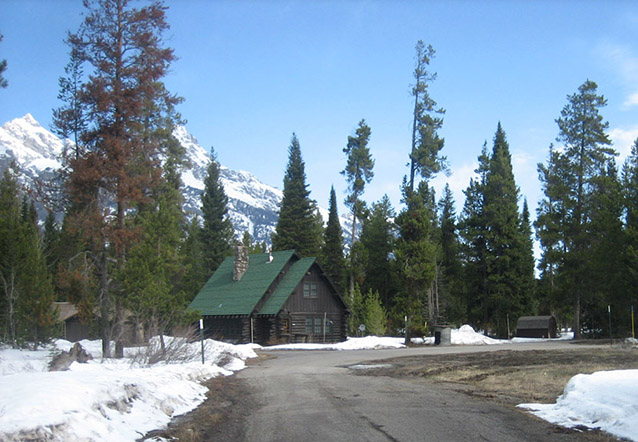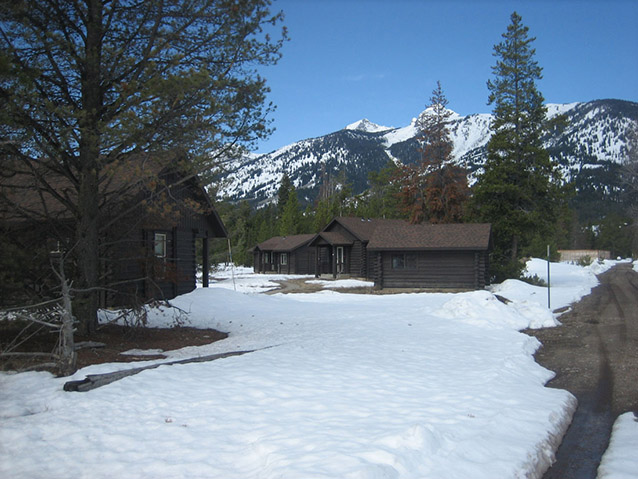The Beaver Creek Administrative Area (also known as the Old Administrative complex) is located at the base of the foothills of the Teton Mountains, approximately 2.5 miles north of Moose, Wyoming in Grand Teton National Park. The first development at the site occurred in 1908, when Forest Service Ranger Al Austin built the Stewart Ranger Station at Beaver Creek as part of what was then known as Teton National Forest.
The 1939 master plan for Beaver Creek comprehensively addressed the need to redevelop and overhaul existing park infrastructure and plan for new facilities.

NPS
Minimal improvements were made to the landscape from 1908 to 1929, including the construction of three buildings, a flagpole, roads, and fencing. After the creation of Grand Teton National Park in 1929, the land was transferred to the National Park Service and was used as the first administrative, residential, and utility area for the park.
Throughout the 1930s, several building and landscape plans were drafted for the development of the area in the Rustic style. Using New Deal funding and programs, the plans came to fruition beginning in 1934 with the construction of the Superintendent’s residence. Throughout the decade Emergency Conservation Work crews and, later, Civilian Conservation Corps crews built rustic log employee residences, garages, maintenance buildings, and curvilinear roads throughout the area. Crews also planted vegetation to blend the new improvements with the surrounding landscape.
The area served as the park headquarters from 1929 to fall 1958, when a new headquarters complex was built in Moose, Wyoming. Since that time, a number of utility buildings have been removed, new employee residences have been added, and circulation patterns have evolved. Today, the area continues to be a main residential area for permanent and seasonal employees with some utility and maintenance functions. Important landscape features include the spatial organization of the overall area, Rustic style log residences, road network, and clusters of vegetation.

NPS / C. Mardorf
The Beaver Creek Administrative Area is significant in the areas of conservation, politics/government, architecture, landscape architecture, and community planning and development from 1908, when the Forest Service built the first ranger station at the site, until the area ceased to be used as the park administrative headquarters in 1958. Overall, the plan for the area is notable for its adherence to the principles of National Park Service Rustic design style.
The NPS Rustic style achieved harmony with the natural surroundings. Grounded in 19th century romantic or pastoral ideals, this functional architecture contributed to natural settings in a visually pleasing and non‑intrusive manner. Characteristic features include the use of natural materials, appropriate scale, and simple forms. Significant landscape features, buildings, and curvilinear circulation systems were created to blend in with the existing landscape.
Quick Facts
- Cultural Landscape Type: Designed
- National Register Significance Level: Local
- National Register Significance Criteria: A, C
- Period of Significance: 1908-1958
Landscape Links
Last updated: December 31, 2019
